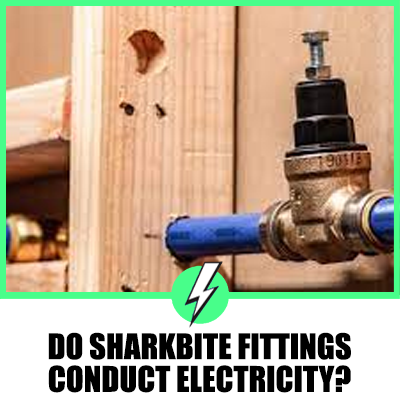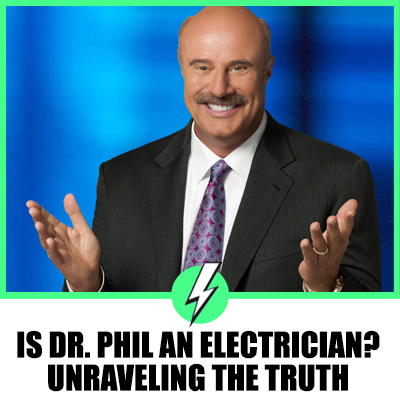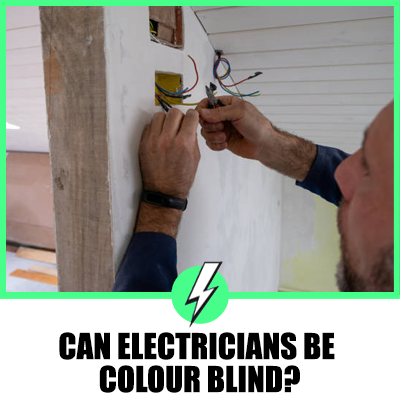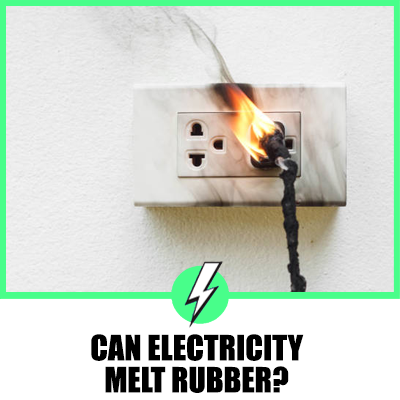British Electrical Plugs: Is There A Way To Turn Them Upside-Down?
Do you find the thickness of the plug and cable makes it difficult to hide your wires around your appliances discreetly? Is there an easy way to hide your cables?
The most common way to power your appliances is to use a plug and a 13A outlet, but the thickness of the plug can be obtrusive and prevent you from having neat and tidy cables. You can use a TV stand to hide your cables or use an electrical conduit with double-sided tape to hide the cables.
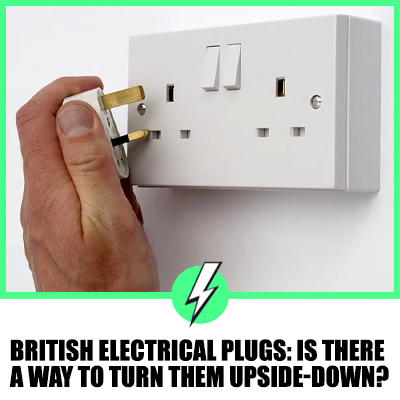
Contents
Can you put a plug socket upside down in the UK?
Yes, it’s possible. To turn your socket upside down, your first need is to isolate the power for the consumer board. You can isolate the circuit or flip the mains switch, so there is no electricity flowing into the property.
Note where the incoming wires are located behind the socket, brown live, blue neutral, and green and brown earth. It should be marked on the switch, but you can take an image with your smartphone camera for your own safety.
Simply disconnect the socket from the wires, rotate 180° and reconnect. Your socket is now upside-down, waiting for your upside down or inverted plug.
Make sure the cable in your plug is locked in place and secure, as there will be some bending forces from the cable and gravity.
It is doubtful that there are any regulations against this practice, which could make hiding cables a little easier for TVs.
Can you ask an electrician to rotate your sockets?
No, electricians work to strict guidelines and codes of practice. This includes BS7671 or the 18th edition wiring with an onsite gue that lays out the rules and regulations for wiring your home.
Parts of your property are designated into zones that fall under the building regulations part P for wiring. These areas are namely your kitchen, bathrooms and garden.
Any work carried out in these areas must be done by a qualified accredited electrician and is notifiable to the building inspector in your local area. The work can be inspected so an electrician will not deviate from the correct process.
Although the electrical may show empathy, they may be able to develop an alternative creative solution for you.
Can you hide flex from an appliance in the wall?
It is possible. Yes, you can go the labour intensive route of chasing out a channel in your wall and placing a length of flex in conduit and then plastering over the wall.
It’s time consuming, messy and expensive if you ask an electrician to do this on your behalf.
Alternatively, you may consider buying a wall Tv power kit here, which is purpose-designed to fit flush against walls and hide cables.
How do I hide the wires to my wall-mounted TV?
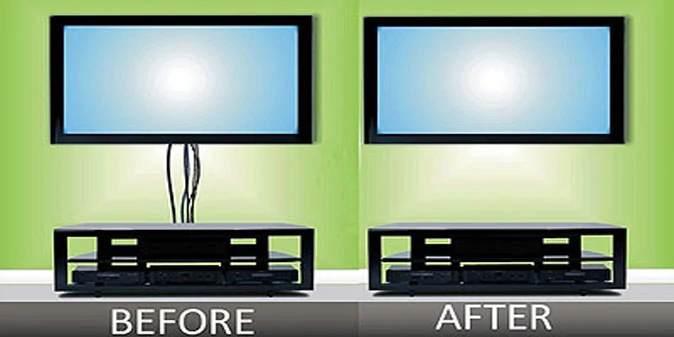
You will need some special tools or get an electrician to do this as they have experience of fishing cables through cavity walls.
Follow these steps:
- Check the wall is substantial enough to hang a flat-screen TV. This means finding the wood supports that can hang the TV bracket and the TV’s weight.
- Ensure no cables are running behind the stud wall. You can do this by using a cable detector.
- Decide where the recessed socket will be located and where you will be taking your power feed from.
- Cut the entry and exit holes. This will include removing a wall socket, so make sure the power is switched off.
- Thread your power cord down towards your power socket, where you can pick up your live feed. You will need the use of a special thin string flexible, rigid pole for this procedure.
- When done, make the connections and replace the faceplates, and you should be good to go.
It’s not complicated, and a DIY enthusiast can easily do this job.
Can you hide the TV power cord behind the wall in the UK?
Yes, you can poke a hole through the plasterboard, thread your tv cord, and connect the other end to a power socket.
You can also camouflage with a cord cover. They simply screw to the wall and place your cables inside like you would with conduit.
It’s considered safe to conceal power cords from TV and other appliances used in the home’s living area.
Can I run an extension cord behind a wall?
No, extension cords were never designed to be concealed behind plasterboard walls. If you did try this, you could risk burning your home down.
Extension cords are notorious for being overloaded, and the cords simply can’t take the number of amps a 13 amp socket can, so don’t have an extension cord concealed in a wall cavity.
How do you hide TV cables in a solid wall UK?
Build a frame. The best way to tackle this job as a retrofit is to build a frame that you can drill into the solid wall. The frame can be the width of the Tv and covered in any way you wish. You may decide to drape it with material to hide cables or make a hidden cavity.
The frame would only need to be half-inch timber, just enough to hide the cables. You will need to leave the plug on the outside of the frame so you can isolate the TV if needed.
How much does it cost to mount a TV and hide the wires?
It depends on where you live in the country, but it’s relatively cheap and hassle-free to hire an electrician to do this for you.
The table below gives an average representation of charges:
Is it worth wall mounting a TV?
It is a personal choice. Wall-mounted TVs with concealed cables look great and are perfect for young families.
It gives a better option for different viewing angles without moving your chair around, and if mounted on a bedroom wall, it can extend your storage options.
